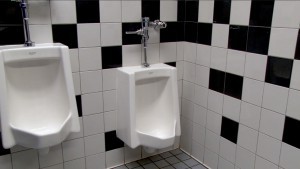- Slug: Schools-Water,390
Photos available below
Video story in YouTube
By SAMANTHA WITHERWAX
Cronkite News
PHOENIX – When the sprinklers come on in the Washington Elementary School District, you can bet the soil needs a drink.
The district has planted wireless irrigation controllers that measure moisture in the soil ensuring the system only turns on when it’s needed. No more watering during a rainstorm. The irrigation system is part of a 15-year contract with Midstate Energy, a performance contracting company that helps optimize facilities and lower costs.
In a 14-month period, from April 2014 – June 2015, the district saved $200,000 on its water bills in comparison to the previous 14 months. High efficiency equipment has been installed throughout the district schools, replacing 371 faucets, 322 toilets and 99 urinals, significantly reducing the gallons per flush as well as gallons per minute.
Mike Kramer, director of capital projects and maintenance for the district, said the renovations are part of a capital lease that will total $5.8 million, and savings started immediately.
“It’s a way for us to upgrade our facilities infrastructure with no capital upfront cost,” Kramer said. “There is a built in incentive for school district facility operators to consider these types of performance contracts to keep the facilities running safe and effectively.”
Stephanie Bracken, city of Phoenix public information officer for Water Services, praised the district for its efforts.
“School districts in general have dropped their overall water use in the last 15 years but this is one of the first schools that’s really gone out there and had a third party help them,” Bracken said.
The volume of water used by school districts between 1990 and 2012 dropped 18 percent, according to the City of Phoenix.
“Any time you can upgrade your fixtures, it’s definitely worth it in the long run.” Bracken said. “Just by making minor changes, and checking for leaks you can save a lot of money.”
However, the irrigation system is more than just a minor change.
“In our case we have roughly 180-acres of managed turf, that we feel that we need to be good stewards of. So we explored different technologies to be able to responsibly limit our water usage while still keeping our facilities looking nice,” Kramer said.
Kramer hopes other districts take notice.
“We would like to be leaders in this and would like other school districts to follow suit,” Kramer said. “If everybody contributed like we do we think we could make a really positive impact on Arizona’s water consumption.”
^___=


